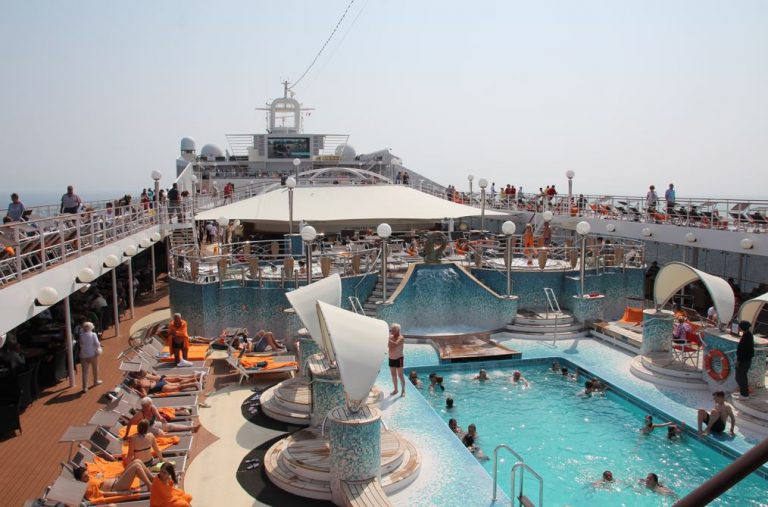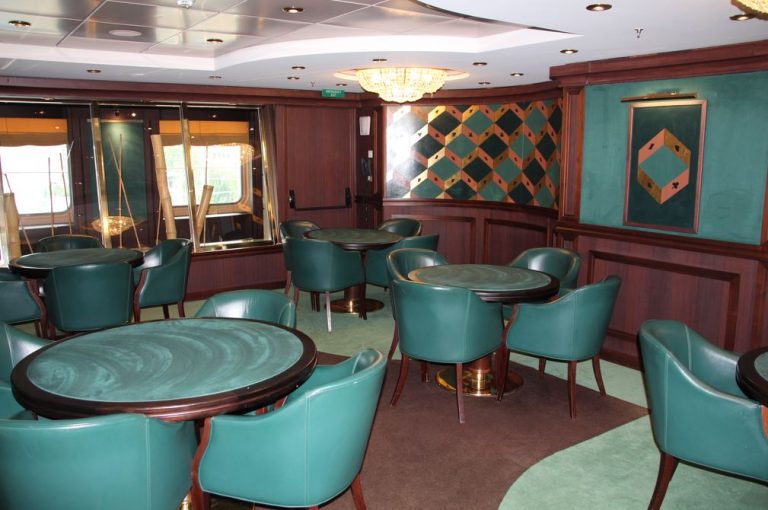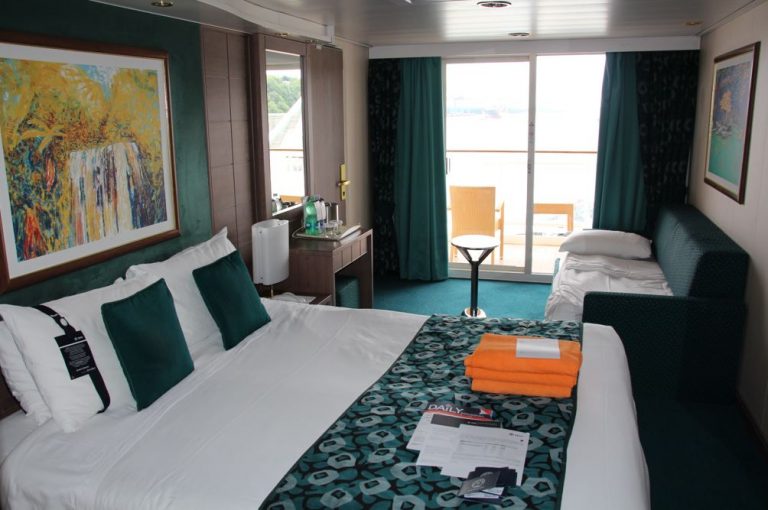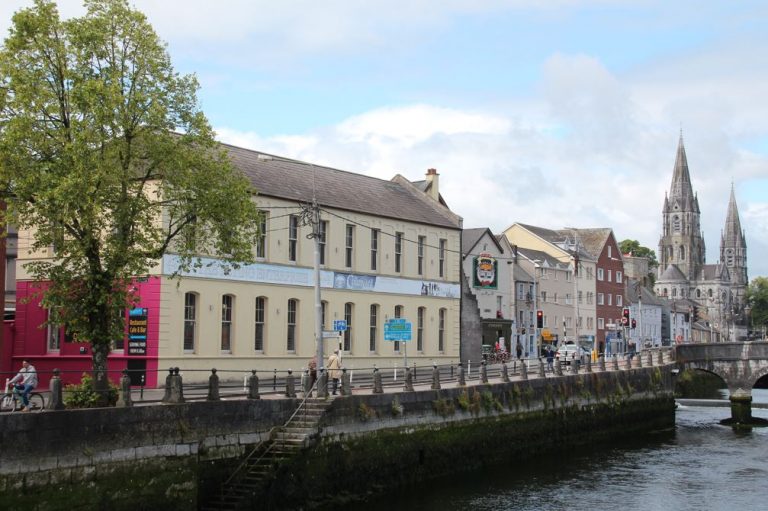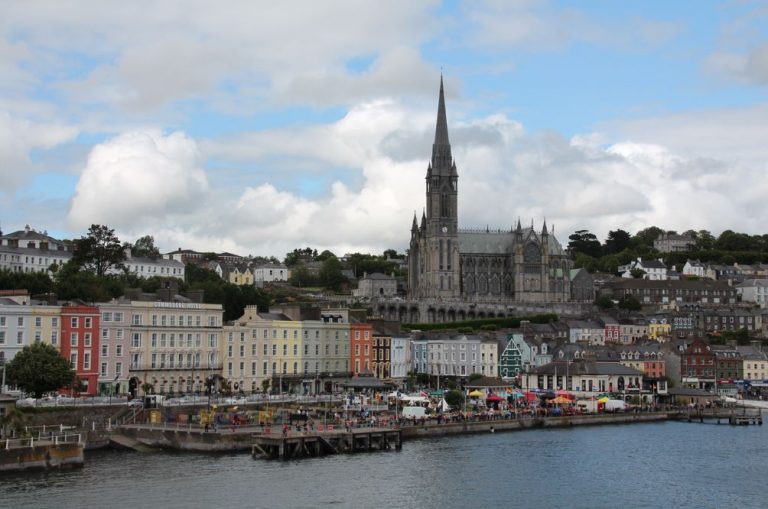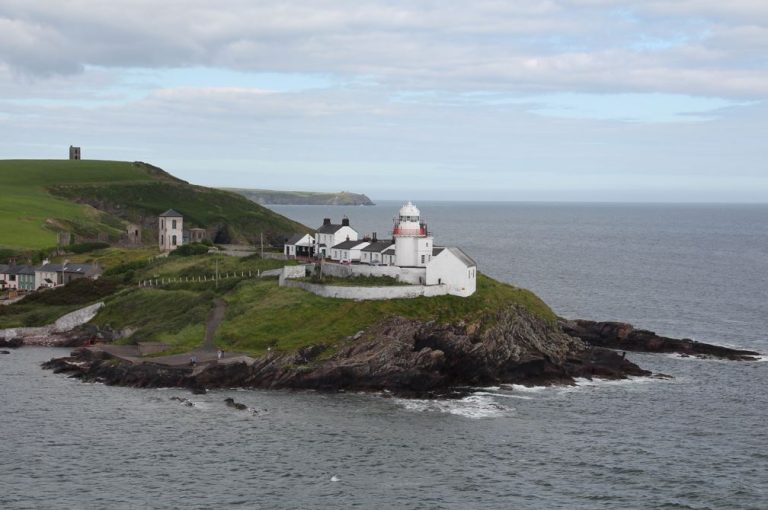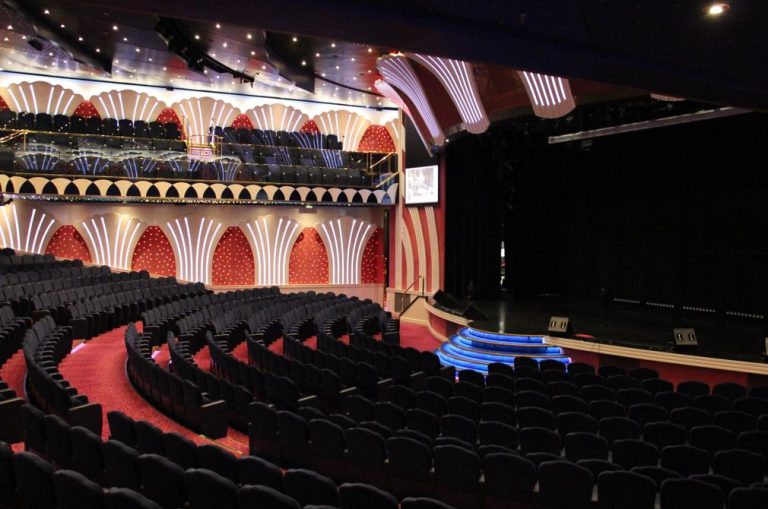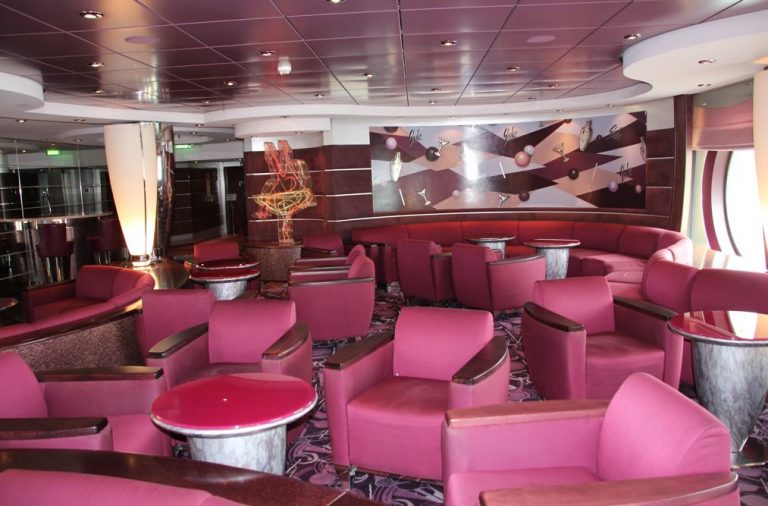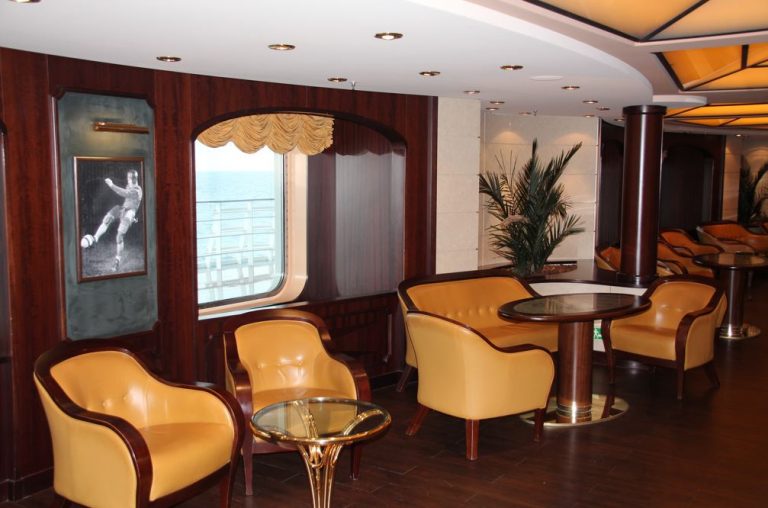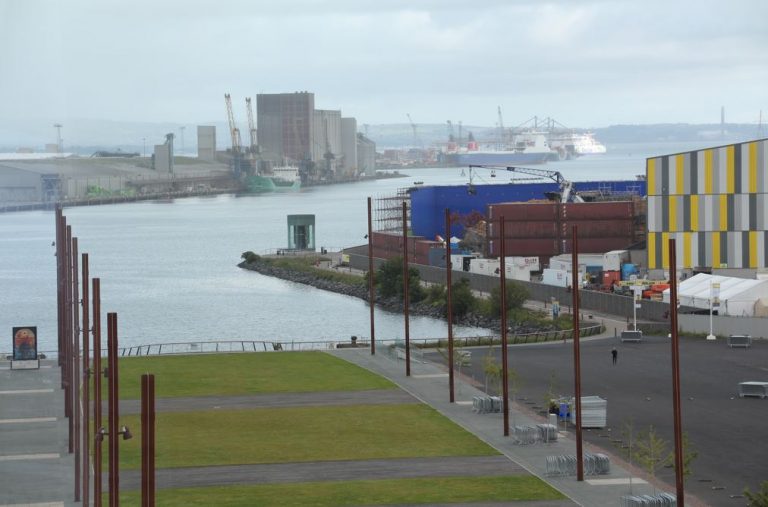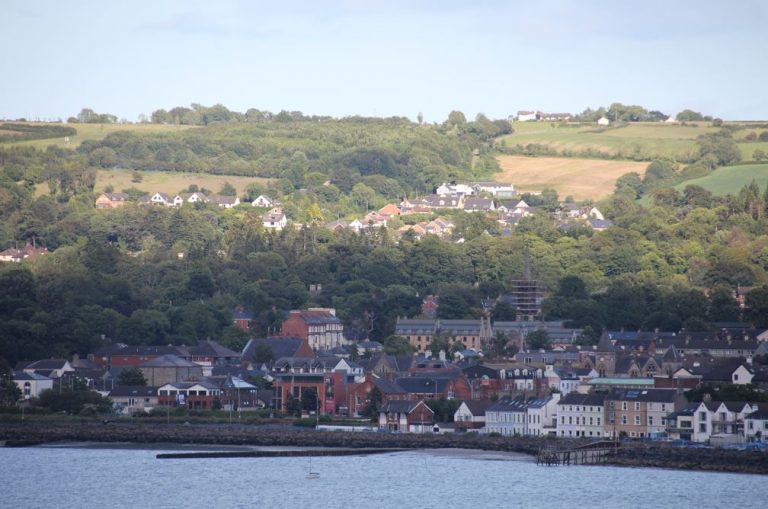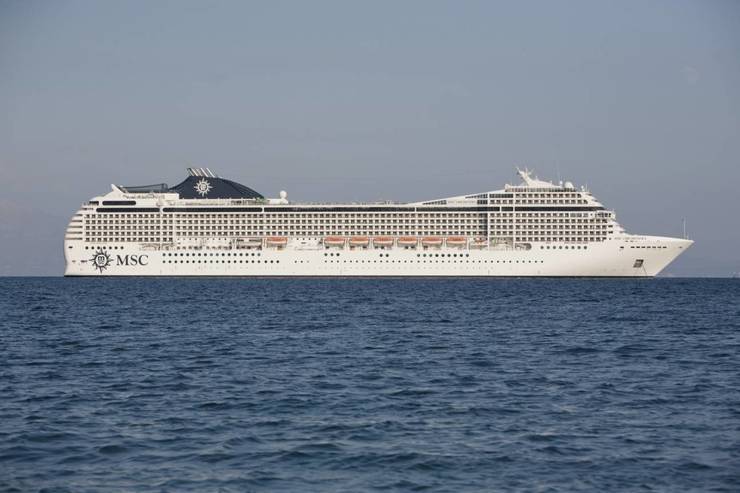Msc Orchestra: Round Britain italian style (Pt1)
Here we are in the first part of the story of an experience on Msc Orchestra, with fun on board and fantastic cities to discover. Happy reading!
You don’t take a cruise around the British Isles for the weather. Instead, what you’ll get is an abundance of green landscapes, deep insights into British and Irish culture and architecture and more than the usual encounter with maritime history along the way.
Our first port of call is a surprise. “All aboard for St. Peter Port at 5:15 pm” is written on the signpost at the entrance to the Msc Orchestra just after embarkation at the Altona cruise terminal in Hamburg. St. Peter Port is the island capital of Guernsey, but shouldn’t we actually call at St. Helier on Jersey? A supplement to the daily onboard program informs us about the change. A safe anchoring and tendering service in St. Helier are not possible “due to the prevailing sea conditions”, the text reads. The ship’s arrival and departure times remain the same, however, so most of the 2,800 passengers onboard accept the route change without complaints.
Msc Orchestra Hamburg
St. Peter Port/Guernsey
Two days later, my family and I are sitting in one of the aforementioned tenders and decide to take an anticyclical approach to our planned walk of the city: Instead of visiting Castle Cornet first, a sea fortress which is protecting the harbour and which almost all cruise passengers want to see immediately after disembarkation, we head to St. Peter Port’s “Old Quarter” instead and walk up to Victoria Tower, too. All along the way, we encounter bilingual street signs and designations. Market Street is also “Rue du Marché”, the Catholic Church is called “Notre Dame du Rosaire”, and the laundry on the corner of another of the Old Quarter’s picturesque streets is called “Launderette”. The Channel Islands may belong to Great Britain and may have their own administration, but the proximity to France is unmistakable in Guernsey and Jersey. So are the many flowers, palm trees and parks in town.
The climate is milder than in England, making the Channel Islands popular as a holiday destination during the off-season. Castle Cornet, on the other hand, has served to defend Guernsey and its inhabitants ever since the 13th century – with varying degrees of success, that is. French troops have repeatedly succeeded in occupying the island. Nevertheless, at the end of 1651, Castle Cornet was the last royalist post in the entire United Kingdom to surrender to Oliver Cromwell’s republican troops during the English Civil War. After the Napoleonic Wars, the fortress was connected to the mainland, and since the end of the Second World War serves as a museum.
Msc Orchestra
At 3 pm, the Msc Orchestra weighs anchor and sets course for the second island of the voyage – Ireland. Time to finally discover the ship. The Msc Orchestra is pleasing. Built in 2007 as the second unit of the MSC MUSICA class, she is not as large and extravagant as the vessels of the Msc Fantasia and Msc Meraviglia classes. Also the colours in her interior are bold but not daring, so no room falls out of line. The Card Room and onboard library are even so nice, we bookmark both for the upcoming days at sea day or for the evenings onboard.
There is nothing wrong with cabin 8222 either. Carpeting, curtains and sofa are in an unobtrusive dark green, only the expressionist painting above the bed doesn’t quite fit in. On the balcony, there are two wicker chairs and a small table, promising relaxing hours away from the hustle and bustle of the ship’s nightlife and entertainment – weather permitting, that is.
Msc Orchestra Card Room
Msc Orchestra cabin
Cork and Cobh
Cobh, the second port of call during our cruise, mainly serves as a starting point for excursions to nearby Cork and to the famous gourmet restaurants and whiskey distilleries of Southern Ireland. Shortly after the arrival of the Msc Orchestra, we stand at the small train station directly at the quay to buy a ticket to Cork. There would also have been a transfer bus, but €25 per person seemed a bit overpriced, as is often the case.
Cork is about 25 minutes by train from Cobh and can be excellently explored on foot. The city centre lies on an island between the two arms (North Channel and South Channel) of the river Lee, with even the two wide main streets, St. Patrick’s Street and Grand Parade, having themselves been navigable little canals as recently as the 18th century. Today, no less than 25 bridges connect downtown Cork with the districts to the north and south, so you don’t have to worry about not finding your way.
Cork
Like Dublin, the city of Cork offers plenty of pubs, restored old brick buildings, churches and shops, although most of the streets and cafés around the famous English Market hide their charm on this Sunday morning. On the other hand, Cork reveals its Catholic character around St. Fin Barre’s Cathedral, a rather oversized church that can be reached via a bridge over the South Channel. During the Irish War of Independence at the beginning of the 20th century, Cork was known as the “Rebel City”, and even today the “Corkonians” are said to have saved a rebellious and spirited streak. Perhaps this is why the city with its thriving cultural and music scene was named European Capital of Culture in 2005. On the opposite side of the North Channel, St. Anne’s Church stands on a hill. Visitors are allowed to ring the bells themselves in the church, and its square tower, the “Pepperpot”, is known for the fact that the tower clocks on each side show a different time, which is why it is also called the “four-faced liar”.
Cobh
Rather than Cork, Cobh today is not too well-known outside the cruise community. Many however remember the town by its old English name Queenstown which it bore until the Irish independence in 1922. Cobh is primarily associated with maritime history, and especially with two ships – the TITANIC and the LUSITANIA. The former made a final stop off what was Queenstown in 1912 before her fateful Atlantic crossing, while the latter was sunk by a German submarine not far from the coast of southern Ireland in 1915. The memory of both shipwrecks is still alive in Cobh today. The town also surprises with an interesting contrast between cute colourful terraced houses winding up the serpentines and the huge St. Colman’s Cathedral. At 92 metres, its tower is the second tallest of its kind in Ireland. Its construction was an expression of the town’s wealth which Queenstown had achieved as an emigrant port in the 19th century.
Cobh Msc Orchestra
As the Msc Orchestra leaves Cobh at 5 p.m., the weather in a rare moment turns for good. When our ship sets course for the open sea again, there’s suddenly a blue sky over the green hills of Ireland. Even out on the Eastern Atlantic which can turn choppy quickly the sun continues to shine over calm seas, leaving opportunities on the outside decks for a mini-golf match.
Before the second gala dinner of the cruise later tonight, we visit the show in the onboard theatre. On some days, activities like these don’t fit in our family plans, on others the theme doesn’t appeal to us, but the “Bella Italia” show is a must on an Italian cruise ship like the Msc Orchestra. Of course, cruise director Franco Pili refers to the Italian origins of the shipping company at the beginning, but then the passengers enjoy a fabulous tenor in the person of Guillermo Dominguez. Whether “Nessun Dorma”, “Arrivederci Roma” or “O sole mio” – every song he sings gives you goose bumps. The same goes for the gala dinner afterwards, albeit for different reasons. Not only the salad and the ice cream sundae for dessert are fantastic, the monkfish with rice also deserves the rating “excellent”.
Msc Orchestra Theatre
With the gala dinner finished, music is what nightlife onboard the Msc Orchestra is all about. Amidships, soprano Eva Corbetta fills the atrium with her voice alone – not needing a microphone, she performs a complete aria that everyone strolling along leads to stop and listen. Meanwhile in the Amber Bar, you can have a glass of wine listening to dreamy piano melodies, while in the Savannah Bar, you can dance to Boney M.’s “Rivers of Babylon”. In the “La Cantinella” Bar, guitarist Valeria performs a melancholy version of “Ain’t no Sunshine”, and in the Shaker Lounge, the band “Powerplay” whispers “Hopelessly devoted to you” in dim light. Not to forget the karaoke competition to the inevitable Abba songbook in the R 32 disco. “Orchestra”, according to the dictionary, means “larger ensemble of instrumentalists”. On hardly any other ship is the ship’s name as much a program as on the Msc Orchestra.
Msc Orchestra Shaker Lounge
Msc Orchestra La Cantinella Wine Bar
Belfast
The weather over Northern Ireland the next morning more resembles a bittersweet symphony. The sun can’t quite decide whether or not it should come out from behind the thick clouds or rather allow the morning downpour to continue. The result: wet decks on board the Msc Orchestra and a rainbow over the hills of Belfast Lough.
Belfast itself cannot offer the same picturesque idyll as Cobh. From afar, “Samson” and “Goliath”, the two giant yellow gantry cranes of Harland & Wolff mark the skyline of the city and its chronically crisis-ridden shipyard that built the TITANIC in 1912. More than 100 years later, not much is left of the glory of bygone days. Large parts of the H & W shipyard site are unused and decaying with the business itself struggling to keep its head above the water with effort only by means of the occasional ferry or offshore repair contract.
Belfast
In 2012 however, the city opened “Titanic Belfast“, a modern museum about the TITANIC. Visitors should plan to spend at least two hours there, as the multi-storey exhibition is very detailed and visually appealing. It not only focuses on the famous liner itself, but also on the port of Belfast, the Harland & Wolff shipyard and the aftermath of the sinking until the present day. The huge museum shop is also a must not only for maritime enthusiasts, and there is even more to see outside. The “Titanic Slipway”, the birthplace, so to speak, where the liner was once launched, can be walked across, and the lovingly restored little NOMADIC can also be visited as well. The small vessel served as a tender boat in Cherbourg while the large liners of the White Star Line were anchoring off the French port prior to their Atlantic crossings. Built in 1911, the NOMADIC is the last surviving ship of the famous White Star Line today. Her restored interior exudes the charm of the Edwardian era, so a visit onboard is definitely worthwhile.
Belfast Titanic
Belfast
A few steps away where the river Lagan flows into the Belfast Lough, tourists have the choice between several bridges that lead from Belfast’s Eastside into the city centre. The historic division between the Protestant but rather proletarian East Belfast (with the Harland & Wolff shipyard as its centre) and the Catholic and prosperous West Belfast (with the City Hall and Donegall Square as its centre) is no longer very much in place. However, unlike the Titanic quarter Belfast’s city centre pleases with a charming mix of historic and modern architecture, lively pedestrian zones and the omnipresent atmosphere of a harbour city –the ever-present cry of seagulls, numerous cosy pubs and a fresh sea breeze drifting inland along the banks of the river Lagan. Only those looking for tangible clues to “The Troubles” (the Northern Ireland conflict) will be disappointed.
The troubles are mainly taking place in the suburbs of Belfast which you usually don’t get to see as a cruise passenger.
We are almost at the end of our experience, so see you next week for the second part!
Also, don’t miss updates, news and reviews of Msc Cruises on Cruising Journal with photos, videos and cruises on offer!


